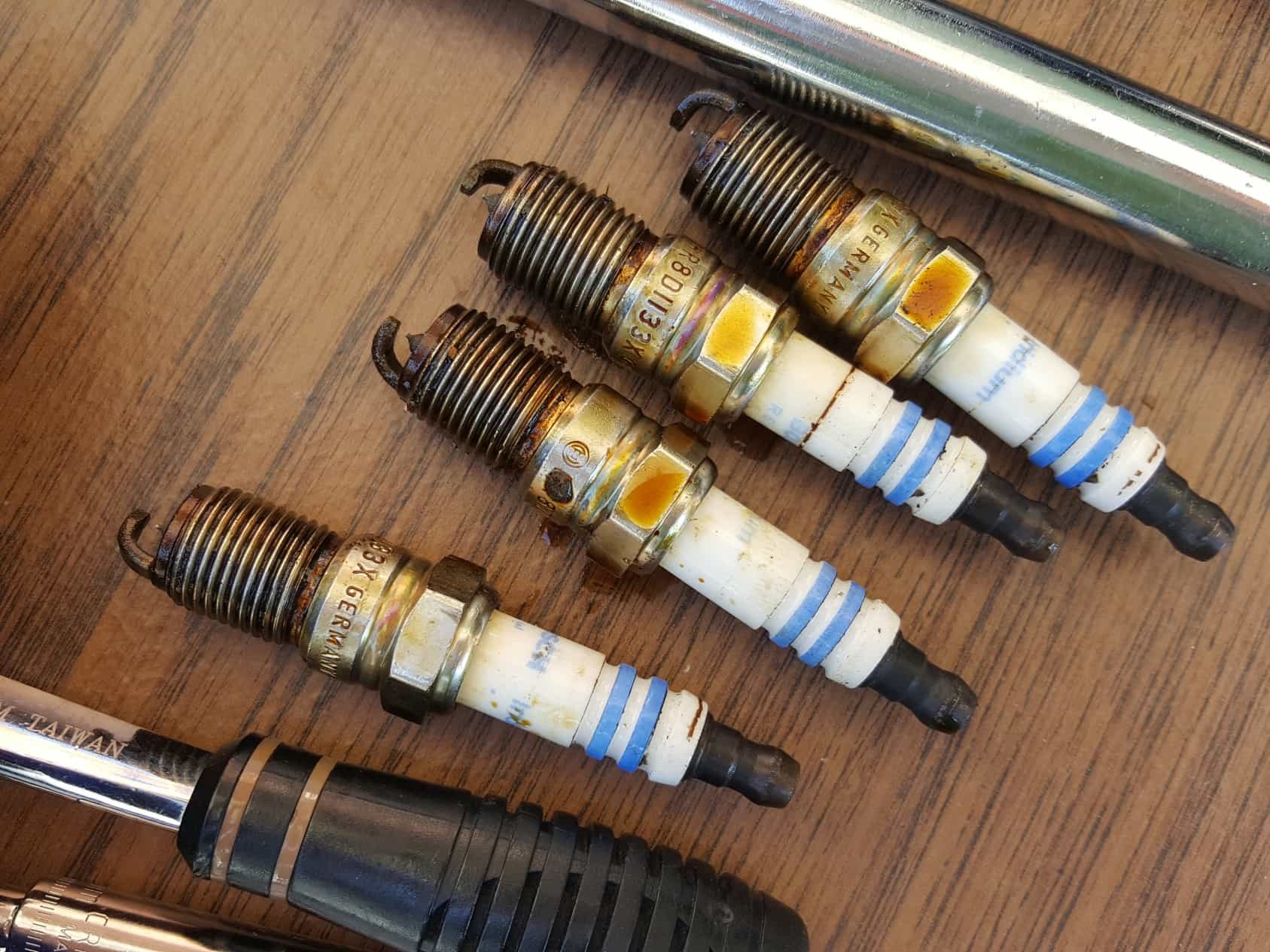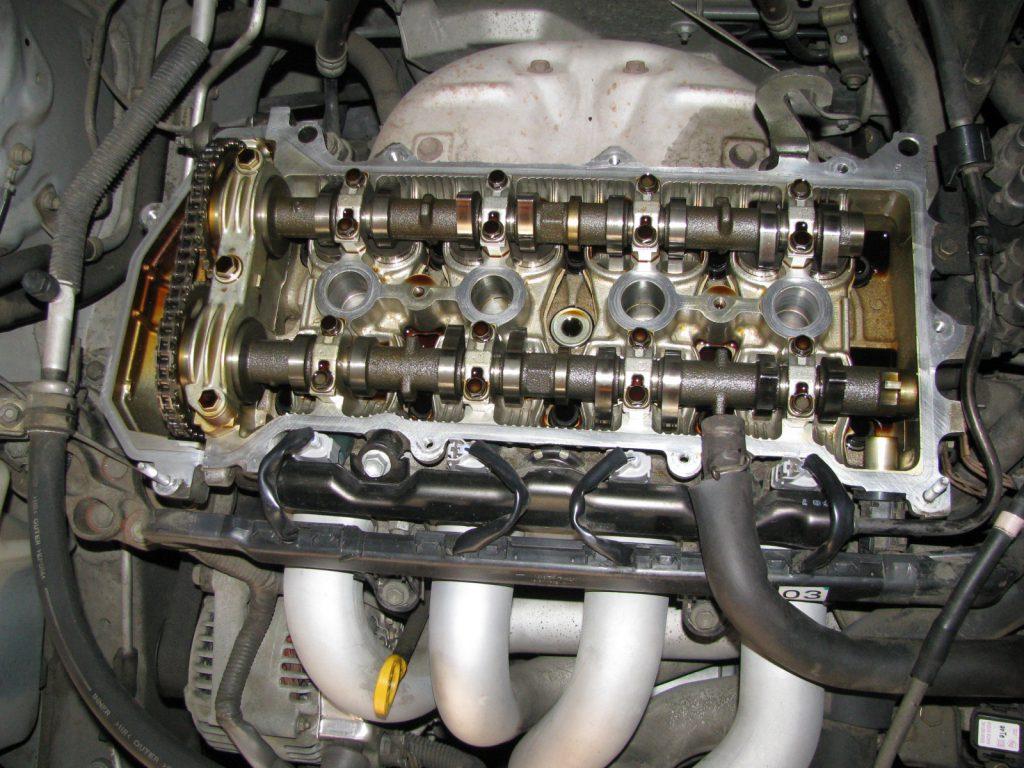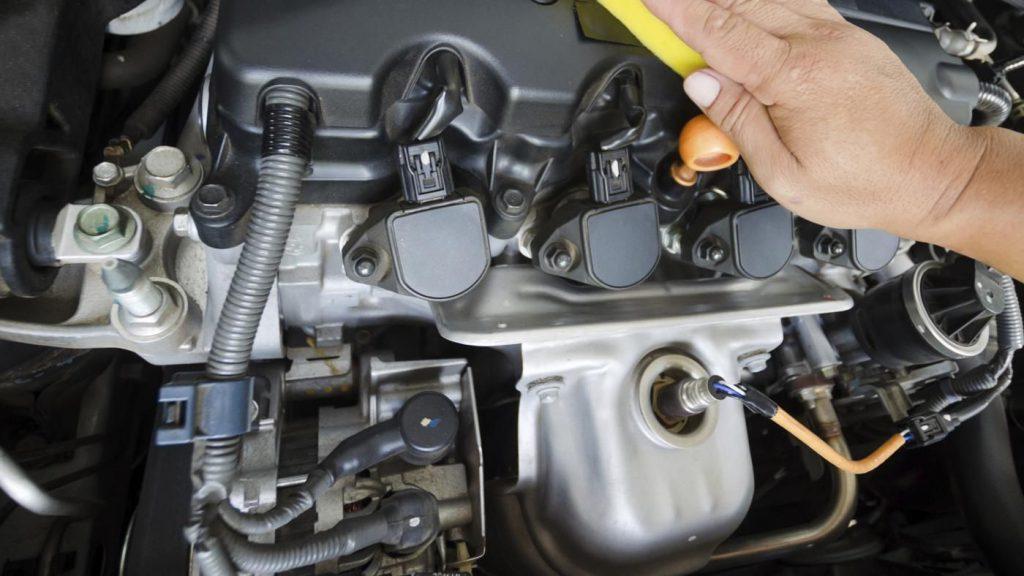
Don’t freak, if you find oil on spark plug threads because it doesn’t mean that the engine would blow up. In fact, it is just a sign that the vehicle’s spark plug tubes are leaking, which needs to be fixed immediately.
So, to follow the repair and maintenance tips of spark plug threads, let’s quickly go through the steps mentioned here, in this regard.
Systematic Procedure to Remove Oil on Spark Plug Threads
The spark plug drenched in oil will cause the engine to misfire. However, it is important to note that the main culprit here is not the spark plug but the gasket (highly possible), which led to this problem. So, before fixing the oil on spark plug, make sure you are equipped with the following tools:
- Valve cover gasket and O-ring spark plug tube seal
- Power Handle
- Spray cleaner (for oil)
- Pliers
- Socket and spark plug socket
- Ratchet and extension
- Engine sealer
- Screwdriver
Now, once you have all these mechanical components, start straightway with the fixation of oil on spark plug threads.
1. Analyze the Gasket Position and Status

Being a very small part of the engine, the gasket is meant to seal. It is actually the elastic band, which is attached to the specific part of the engine. The size and shape of the gasket differ according to the component in the vehicle. For instance, there are a head gasket, cylinder gasket, and the valve gasket; for the components in which they are sealed.
A damaged gasket would let the engine fluids and oil enter into the spark plug freely. Hence, it becomes the strong reason for engine misfire in the vehicle.
Does oil on spark plug issue disturb you? Here is how to fix it!
2. Remove the Spark Plugs and the Valve Cover
Spark plugs are built into the valve cover. Therefore, to change them, valve cover is to be removed first. So, before this, take out the spark plug tubes and put them on the side.
Once it is done, next take the clamps off the hoses that go to the valve cover using pliers that can easily unlock them. Next, you can use your hands to take the hose out.
After this, remove the wiring harness of the top of the valve cover. Once accomplished, now you can get a big socket and power handle to take the nuts out of the valve cover (For this, make sure to remove the nuts one by one with the tool unless it gets easy to remove the one with the fingers.
Then, get the screwdriver and pry under the valve cover as it is often stuck on. With the little wiggling and prying, one can easily get it off.
3. Seal Removal
Now after the valve cover is removed, the seals located in each of the spark plugs can be noticed. Basically, these seals are the major cause of oil on spark plug threads, which allowed the oil to seep into the spark plug.
Remember that before you remove the old seals and valve gasket, you have the new ones, in hand.

4. Install the New Valve Cover Gasket
Getting the gasket as per the shape of the component is essential. Moreover, one must also check the material and the quality of the gasket, before purchasing it for the vehicle. Normally, the high-quality silicone material is considered good for the durability of the car and the valve cover gasket. Furthermore, these don’t need retyping often, which not only reduces the work but at the same time expenditure, too.
So, once you have it, first add a liquid called sealer at the edges so that the new gasket doesn’t slip over. In addition to it, the gasket placed over the liquid sealer will tightly secure its place thus, preventing the entrance of oil on the spark plug.
5. Installation of Spark Plug Gasket
Lastly, one needs to place the spark plug gasket on the rim of the spark plug well. These are actually circular in shape, which is placed in the same manner using the liquid sealant as the valve cover gasket. Once finished with it, now bolt the nuts in the order 2-3-1-4 that were removed earlier, in order to avoid any damage to the valve cover.
TIP: Following this order of screwing the nuts tightly is necessary.
Afterward, place everything back in position and make sure to rinse the oil off the parts (which would have spilled around) by using the oil cleaner.

To wrap it up, spark plugs role is quite larger than its size in the functioning of the engine. Therefore, it’s the responsibility of the car owner to keep a check on the condition of the engine and determine that there is no oil on spark plug threads.
